Pink Himalayan salt, loved for its particular tone and mineral-rich composition, has recently acquired far and wide prevalence. This salt, which comes from ancient sea deposits in the Himalayan mountains, is famous for its distinctive pink color caused by trace minerals like iron and magnesium. In addition to its culinary applications, health claims of improved electrolyte balance and detoxification have increased salt’s popularity. The allure of this exotic salt continues to captivate consumers, making it a prominent fixture in kitchens and wellness circles alike, despite ongoing debates within the scientific community regarding the extent of these health benefits.
When ancient seas evaporated, they left behind deposits in the Himalayan mountains, which are the origin of the Himalayan salt mines. The distinctive pink salt, famous for its unique composition and flavor, was formed over time due to intense geological pressure.
Geographical location of the Himalayan Pink Salt Mines
Most of the salt mines can be found in Pakistan, near the town of Khewra in the middle of the Himalayan range. This area is home to one of the World’s largest and oldest salt mines, which dates back to the Precambrian. The ancient ocean beds that evaporated many years prior are the wellspring of the salt stores, which are gem structures profound inside the Earth. Pink Himalayan salt is shaped through complex geographical cycles of extraordinary strain and intensity over centuries. As the mountains grew and the climate changed, these deposits did not suffer any damage from modern pollutants. Traditional methods are used to extract the salt from the depths of the Khewra Salt Mine, revealing the salt’s surprising pink crystals, which have delighted the World and contributed to the salt’s distinctive qualities and appeal.
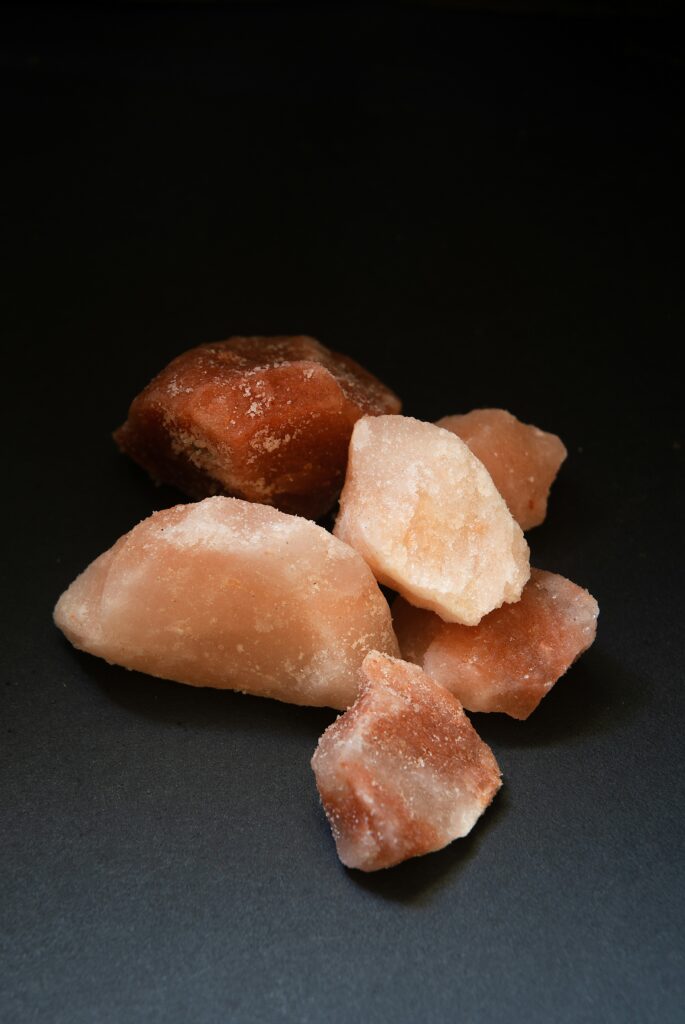
Formation Process and Geological History
The development of pink Himalayan salt dates back to the old-fashioned land history of the Himalayan area, dating more than 250 million years. The large sea that once covered the area evaporated during the Permian period, leaving behind enormous salt deposits. Over the long haul, structural developments and the World’s land powers prompted the arrangement of the Himalayan mountain range, exemplifying these salt stores inside its folds.
The presence of trace minerals, primarily iron oxide, imparted during the crystallization process is the reason for the salt’s distinctive pink color. These minerals add to its tasteful allure and impact its apparent medical advantages. The mineral purity of the salt beds remained unaffected by modern environmental contaminants. Pink Himalayan salt is a geological relic still mined deep within the mountains. It gives a view into the Earth’s ancient past and gives culinary and wellness practices a unique flavor.
Read More: Different types of Cutlery
Mining techniques of Pink Salt and sustainability concerns
Pink Himalayan salt is mined by extracting it from deep mines in Pakistan’s Khewra Salt Mine. These mines are located below the Himalayan mountains and contain substantial salt deposits. Conventional strategies incorporate boring and impacting to make caves for extraction. However, questions regarding the viability of these mining methods have surfaced.
The rapid global demand for Pink Himalayan salt has sparked concerns regarding its impact on the environment, including the destruction of ecosystems, the consumption of energy, and deforestation. Also, the social ramifications for nearby networks and laborers in the mining business are being examined. Endeavors are in progress to advance manageable practices, for example, eco-accommodating mining methods and moral work rehearses. To ensure the preservation of this specific natural resource, initiatives aimed at reducing the environmental effect of Pink Himalayan salt extraction seek to balance the rising demand with long-term ecological and social considerations.
Read More: Best Leather Working Tools
Composition and Characteristics of Himalayan Salt
Pink Himalayan salt is essentially made out of sodium chloride, with minor elements like iron, magnesium, and potassium granting its particular pink tone. Its interesting creation adds a somewhat unique taste contrasted with customary table salt. Even though the scientific consensus on these claims is still developing, proponents also assert potential health benefits.
Chemical composition of Himalayan salt compared to table salt
The chemical composition of pink Himalayan salt and table salt (sodium chloride) differ, contributing to their distinct characteristics. While both comprise sodium chloride, Pink Himalayan salt flaunts extra minerals like iron, magnesium, potassium, and calcium. The salt’s pink color comes from these trace elements, which may also affect its flavor. Then again, table salt goes through broad handling, which frequently includes stripping away contaminations and minor elements. To prevent clumping, it often contains additives like anti-caking agents. A few defenders of Pink Himalayan salt contend that its natural nature and various mineral substances make it a more regular and fortifying choice. However, it is essential to remember that salt contains relatively few of these minerals, and the scientific consensus regarding their significant health benefits is still a subject of ongoing research and discussion.
Unique minerals and trace elements found in pink Himalayan salt
Pink Himalayan salt is distinguished from standard table salt not only by its distinctive color but also by its high mineral content. This normal salt is overflowing with fundamental minerals and minor elements, including iron, potassium, magnesium, and calcium. The pink hue enhances the salt’s distinctive flavor, attributed to iron oxide. Also, the salt contains minor components like zinc, selenium, and copper, further improving its wholesome profile. Saying about the salt’s uniqueness
“Always have a unique character like salt. Its presence may not be felt,
But its absence makes the food tasteless.”
Pink Himalayan salt proponents assert that these minerals improve electrolyte balance, regulate pH, and possibly detoxify the body. Despite the limited scientific evidence that supports these claims, the diverse mineral composition undoubtedly contributes to the salt’s distinct flavor and allure for those looking for a more natural alternative to traditional table salt.
Read More: Essential Pottery Raw Materials
Distinctive pink color and its significance
The presence of trace minerals, especially iron oxide, within the crystalline structure gives Himalayan salt its distinctive pink color. In addition to contributing to its appealing color, this mineral composition also creates a unique flavor profile. The iron gives the salt a stronger and gritty taste, contrasting with standard table salt.
Past its stylish appeal and flavor upgrade, a few defenders guarantee that the particular minerals in the pink Himalayan salt proposition have medical advantages. These alleged advantages include improved circulation, balanced electrolytes, and even support for respiratory health. Despite lacking conclusive scientific evidence to support these claims, the vibrant color is visual proof of the salt’s natural origins. Pink has become synonymous with Himalayan salt’s perceived purity and uniqueness, making it appealing in the kitchen, holistic wellness practices, and decorative salt lamps.
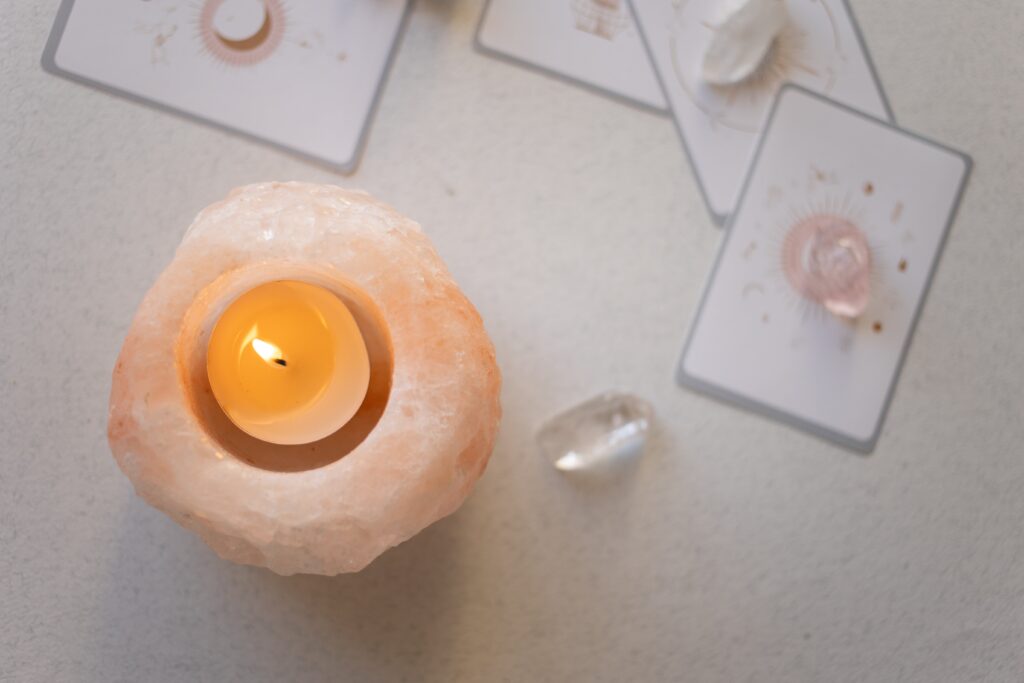
Culinary Uses of Pink Salt
Pink Himalayan salt is prized for its versatility in the kitchen, enhancing flavors in various dishes. It is believed to have health benefits like improved digestion and electrolyte balance due to its unique mineral profile.
The flavor profile and culinary applications
Pink Himalayan salt stands apart from normal table salt because of its specific flavor profile. This salt improves the general flavor of dishes with an unpretentious yet intricate taste and is portrayed by an inconspicuous heartiness and a sprinkle of pleasantness. Given its nuanced flavor, it functions admirably with various cooking styles and can be used to prepare meats, vegetables, and even treats.
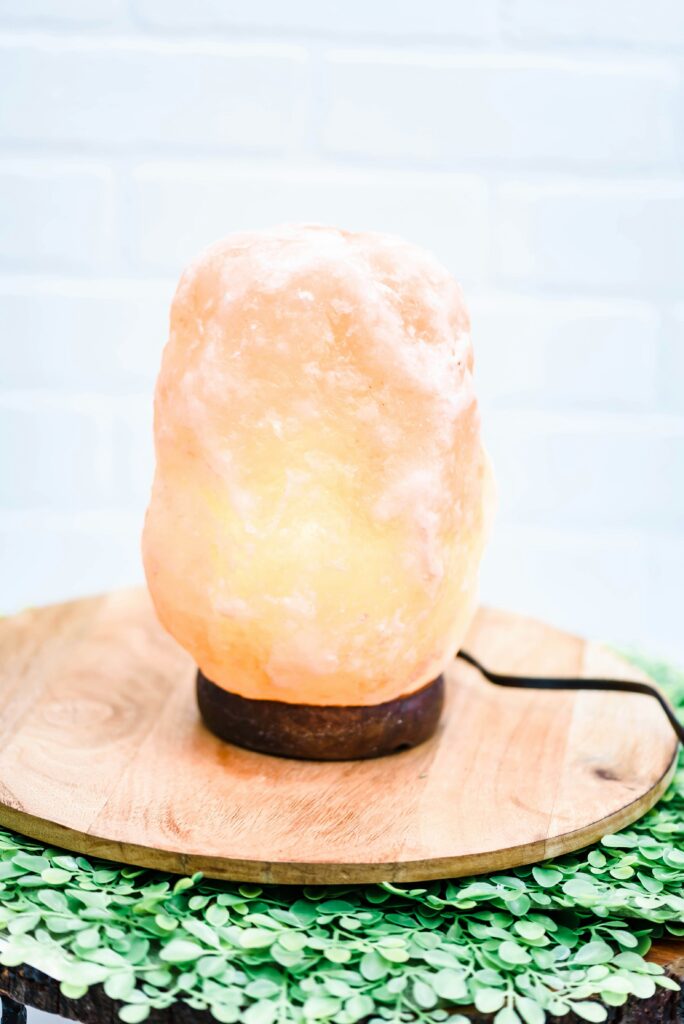
It is a well-known decision for connoisseur arrangements because of its capacity to give a more refined flavor, which cooks value. The salt’s composition, full of trace minerals, gives flavors depth without being overwhelming. Past the kitchen, the salt’s elegant fascination in like manner makes it a great choice to look good, regularly used in salt processors or as a finishing sprinkle on plates of leafy greens. Pink Himalayan salt has become a sought-after ingredient in contemporary cuisine due to its striking appearance and numerous culinary uses.
Health claims and purported benefits
Well-being claims have surrounded pink Himalayan salt, and its advocates attribute a collection of profits to its exceptional mineral structure. Despite their popularity, there is currently a lack of comprehensive scientific evidence to support some assertions.
Regulation of the Body’s Water Content
According to proponents, the minerals in pink Himalayan salt regulate the body’s water content. Salt’s primary component, sodium, is necessary for fluid balance. Be that as it may, the particular synthesis of pink Himalayan salt, including minor elements, apparently improves its capacity to direct hydration more than customary table salt. The case recommends that drinking this salt might uphold ideal cell water maintenance, forestalling parchedness.
Hydration and Balance of Electrolytes
Electrolytes like sodium, potassium, and magnesium support various physiological functions and maintain adequate hydration. Pink Himalayan salt, which promotes a more balanced mineral profile than processed table salt, is touted as a source of these necessary electrolytes. According to proponents, including this salt in one’s diet may support overall hydration, replenish electrolyte levels, and improve athletic performance.
Mineral Supplementation
The pink Himalayan salt is well-known for its high mineral content, which includes trace amounts of iron, magnesium, and potassium. As per advocates, these minerals are in a more bioavailable and regular structure, making it simpler for the body to retain them. Some proponents contend that regular consumption of this salt can contribute to overall mineral supplementation to address potential deficiencies and support many bodily functions, such as bone health and muscle function.
pH Balance and Digestive Health
There are claims that pink Himalayan salt, which is alkaline in nature, can help maintain a healthy pH and improve digestive health. Alkaline substances are thought to counteract the acidic environment linked to some health issues. According to proponents, including this salt in one’s diet may help maintain a more alkaline pH, improving digestion and lowering the risk of acid-related health issues.
Debunking common myths and misconceptions about Pink Himalayan salt
Pink Himalayan salt is the subject of several misconceptions and myths that require clarification. First, it frequently exaggerates the claim that it contains significantly more minerals than regular table salt; The quantities are rather insignificant. Due to the dominance of the body’s natural detoxification processes, claims regarding its capacity to cleanse the body or treat ailments lack solid scientific support. Additionally, there is a shortage of substantial evidence for claims regarding digestive health and pH equilibrium. Although pink Himalayan salt can provide some necessary minerals, using it as the primary source is impractical. Lastly, the idea that it has fewer health risks associated with sodium than table salt is false because excessive sodium intake is still a concern. It’s vital to approach pink Himalayan salt with a reasonable point of view, appreciating its special characteristics without surrendering to misrepresented well-being claims.
Spa and Wellness Applications of Himalayan Salt
Pink Himalayan salt has gained popularity in spas and wellness centers over the past few years, with advocates claiming that the salt’s distinctive mineral composition provides numerous health benefits. The trace minerals magnesium, potassium, and calcium give this natural salt, which comes from the Himalayan foothills, its distinctive pink color. The various uses of pink Himalayan salt in spa and wellness treatments are examined in this section.
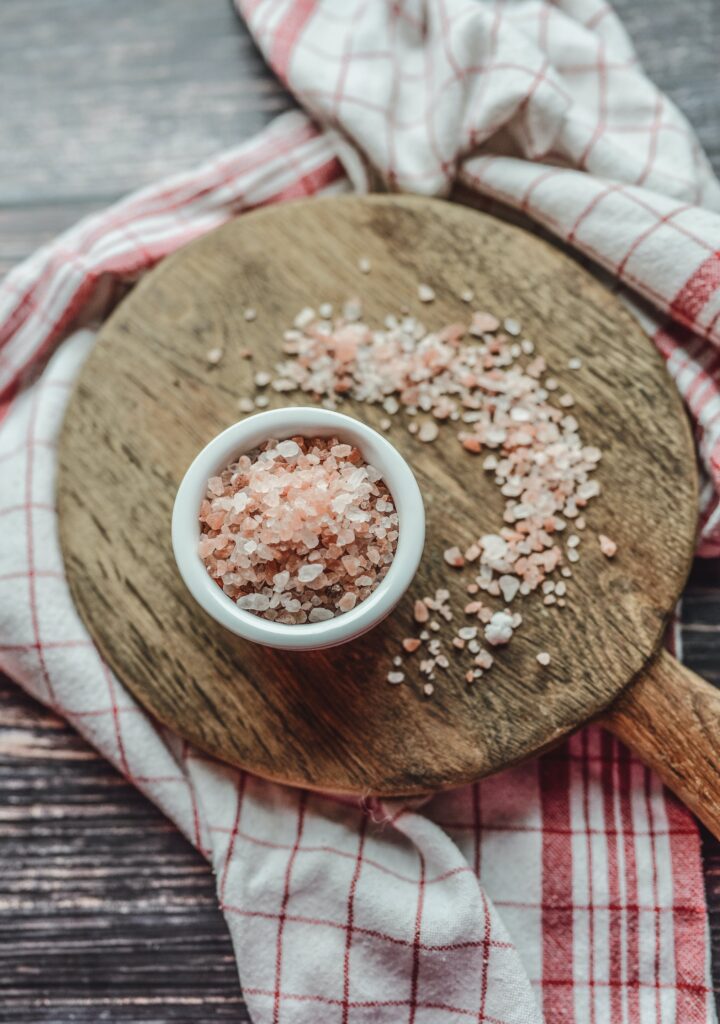
Use of pink Himalayan salt in spa treatments
Given its extraordinary properties, pink Himalayan salt has become progressively famous in spa and health applications. This common precious stone salt comes from the old salt mines in the Himalayan mountains. It has important minerals like magnesium, potassium, and calcium, believed to increase prosperity.
Pink Himalayan salt is frequently used in spa treatments, such as massage stones, scrubs, and bath salts. The minerals in the salt are consumed by the skin when it is disintegrated in warm water, aiding the body’s detoxification and purging. The skin feels revived and renewed due to the delicate shedding caused by salt scours.
Besides, the salt’s assumed ability to change the body’s pH levels and advance better rest makes it a fix in loosening up medicines. Its calming and alleviating influences add to pressure decline, making pink Himalayan salt a regarded part of spa exercises expected to overhaul physical and emotional wellness.
Read More: 13 Best Woods for Carving
Himalayan Salt Lamps and their alleged health benefits
Himalayan salt lights are beautiful pieces produced using precious pink stones mined from the Himalayan mountains. Despite the lack of scientific evidence, proponents assert that they provide numerous health benefits. Defenders contend that the lights discharge negative particles, which can filter air by killing toxins and advancing a feeling of prosperity. Nevertheless, research supporting these cases is meager, and the amount of particles discharged by the lights might be excessively little to have a huge effect.
Some people have used Himalayan salt lamps to modify their mood, sleep, and allergy symptoms; however, these anecdotal reports lack strict scientific backing. Even though the lamps’ warm, soft light can be calming, there isn’t enough research to know whether they have any health benefits. Individual experiences may vary with many alternative therapies, so those seeking evidence-based health interventions should consult a healthcare professional.
Other wellness products made from pink Himalayan salt
Artisans handcrafted different products from Pink Himalayan salt using simple tools. Pink Himalayan salt, respected for its implied medical advantages and particular ruddy tint, expands its existence past the kitchen as a vital fixing in different well-being items. Some people believe that custom handmade Himalayan salt lamps made of large salt crystals release negative ions, which can help calm the environment and improve air quality. Shower salts improved with pink Himalayan salt are famous for their mineral-rich synthesis, remembered to relax muscles, detoxify the body, and advance unwinding during showers. Himalayan salt inhalers are intended to work with salt treatment to ease respiratory issues and improve general respiratory well-being. Pink Himalayan salt is also used in salt scrubs and exfoliating bars to give the skin a healthy glow and a natural way to eliminate dead cells. Whether as lights, shower salts, inhalers, or skincare items, the charm of pink Himalayan salt in health things endures enthralling purchasers with its remarkable properties.
Read More: How to Find Best Selling Products on Etsy (2024)
Environmental and Ethical Considerations
Due to mining methods, pink Himalayan salt extraction raises environmental concerns. Additionally, local communities may face difficulties, which raises ethical issues. Sustainable sourcing and ethical mining are essential to lessen these effects and ensure the well-being of communities and the environment. Some are the following:
Sustainability practices in salt mining
Sustainability practices in salt mining mean limiting natural effects and advancing mindful assets on the board. Many salt mining tasks have embraced eco-accommodating procedures to adjust salt extraction with biological conservation. Utilizing brine extraction techniques, which require less extensive excavation and decrease surface disruption, is common.
“Sustainability, ensuring the future of life on Earth, is an infinite game, the endless expression of generosity on behalf of all.”
(Paul Hawken)
In addition, some salt mines employ water recycling systems to effectively control the amount of water used in the extraction process and lessen the strain on nearby water sources. Also, trend-setting innovations, for example, seismic imaging and GPS planning, assist with streamlining mine preparation, limiting the aggravation of encompassing environments. Some salt mines are incorporating renewable energy sources like wind or solar power into their operations to reduce energy consumption.
In addition, rehabilitation efforts involve bringing mined areas back to their natural state after extraction, boosting biodiversity, and guaranteeing a sustainable landscape. Salt mining projects contribute to a more sustainable and environmentally conscious method of resource extraction by embracing these methods.
Impact on local communities and ecosystems
The local communities and ecosystems are positively and negatively impacted when pink Himalayan salt is removed. Emphatically, the salt mining industry opens opportunities for nearby organizations and lifts the neighborhood economy. However, concerns have been expressed regarding the environmental impact of salt extraction. The mining framework can agitate ecological elements and cause soil deterioration, influencing regular life and situations nearby.
Additionally, extreme salt extraction may decrease the limited Himalayan salt stores, raising concerns regarding supportability over the long term. In addition, there is a possibility that the global demand for Himalayan salt and how it is transported will damage environmental situations and emit more carbon dioxide.
Socially, the rise of the salt mining industry might modify neighborhood ways of life and societies as networks conform to expanded industrialization. Finding equality between financial benefits and ecological safety is crucial to ensure the efficient and ethical extraction of pink Himalayan salt while preserving the health of local networks and the delicate biological systems of the Himalayas.
Read More: Featured Charities that Accept Handmade Items and Craft Supplies
Fairtrade and ethical sourcing initiatives
Ethical sourcing and fair trade for Pink Himalayan salt are becoming increasingly essential as consumers look for responsibly produced products. Because of anxiety about work rehearsals and ecological effects, a few Himalayan salt makers have embraced fair exchange standards. This entails ensuring salt miners and workers receive community benefits, safe working situations, and fair wages. Moral obtaining drives likewise plan to limit natural damage, underlining manageable mining rehearses that safeguard the environment encompassing the salt stores. Furthermore, endeavors are settled to include neighborhood networks in choice-making processes, encouraging a feeling of strengthening and shared liability. By supporting fair exchange and moral obtaining of pink Himalayan salt, customers add to the prosperity of the climate and the networks engaged with the salt creation process, advancing a more maintainable and socially dependable industry.
Culinary and Wellness Tips
Upgrade your culinary creations with the subtle, mineral-rich pink Himalayan salt. Use it as a last little detail on dishes for added profundity. Try a Himalayan salt bath or salt lamp in the wellness category for relaxation and ambiance. Its exceptional properties make it a flexible and useful expansion to your way of life. Some guidelines and tips are the following:
Tips for cooking with pink Himalayan salt
Tips for cooking with pink Himalayan salt are following
Final Detail: The distinctive flavor of pink Himalayan salt is best appreciated as a finishing salt. Sprinkle a squeeze on cooked dishes not long before effectively improving the general taste.
Seasoning by grinding: Put resources into a Himalayan salt processor for newly ground salt. With this, you can better control the salt’s texture and intensity in your dishes.
Adjusting Flavors: Try different things with pink Himalayan salt to adjust sweet and delicious flavors. Chocolates and grilled meats alike can benefit from its subtle mineral notes.
Brining: Make a saline solution for meats by dissolving pink Himalayan salt alongside spices and flavors in water. This gives the meat flavor and helps it become more tender.
Salt Block Cooking: Try cooking on a block of Himalayan salt. Heat it gradually as a cooking surface, bestowing a sensitive spice to your food.
Pastries and sweets: Integrate pink Himalayan salt into dessert recipes, like caramel sauces or chocolate-based treats, for an extraordinary and brilliant wind.
Better Alternative: Think about involving pink Himalayan salt as a better choice than table salt, as it is accepted to contain minor elements that can be valuable with some restraint.
Read More: Craft (Handmade) Industry Statistics for 2024
Incorporating pink Himalayan salt into your wellness routine
Elevate your well-being routine by integrating pink Himalayan salt, valued for its implied medical advantages. Start your day with a warm cup of Himalayan salt sole water — an answer of salt disintegrated in water — professed to recharge minerals, help hydration, and back processing. At night, loosen up with a relieving Himalayan salt shower. Disintegrate some precious salt stones in your bathwater to ease muscle strain, detoxify your skin, and advance unwinding.
A Himalayan salt lamp might be a good addition to your living room. Accepted to deliver negative particles, these lights might improve air quality and make a quiet climate. Furthermore, investigate Himalayan salt inhalers for respiratory prosperity, as they are remembered to lighten respiratory issues.
The distinctive composition of pink Himalayan salt provides a holistic approach to self-care, whether used in cooking or wellness practices. Try out these concepts to take advantage of the potential advantages and incorporate a touch of calmness into your daily routine.
Storage and preservation guidelines of Himalayan salt
The quality and longevity of pink Himalayan salt depend on how well it is stored and preserved. Keep these rules:
Keep it Dry
Because it is absorptive, Himalayan salt can take in wet from the air. Store it in an air-tight container or closed bag to keep its granular texture and prevent clumping.
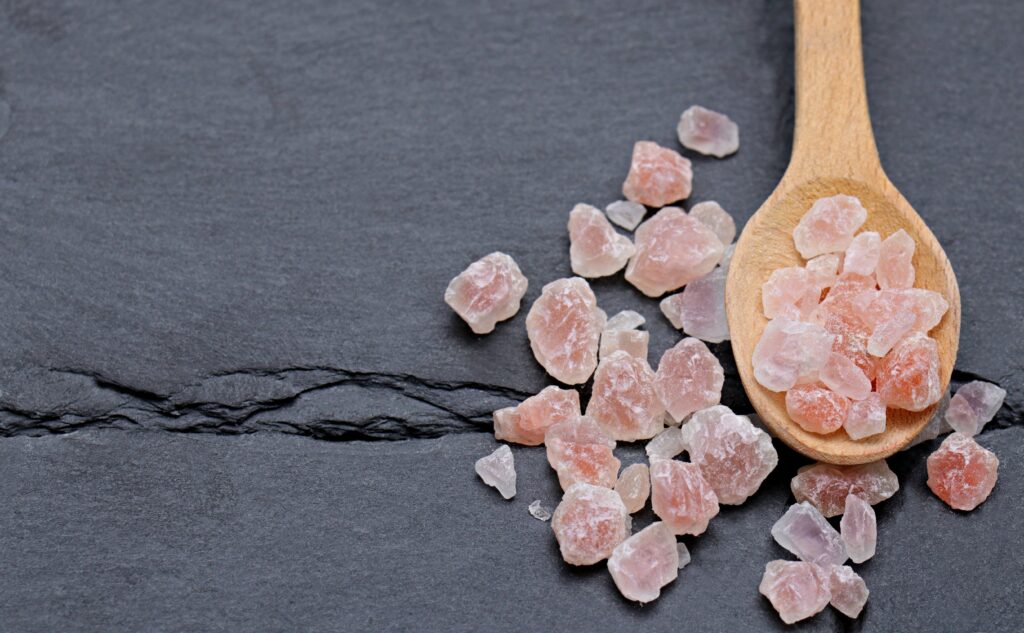
Decrease Your Exposure to Moisture
The salt should be kept somewhere cool, dry, and free of humidity and direct sunlight. Salt can dissolve or form lumps when exposed to moisture.
Choose a container that won’t react
Glass, ceramic, or stainless steel are all good choices for containers. Holders made of metals, for example, that might react with the salt should not be utilized.
Protector against Contaminants
Get the salt far areas of strength from or waste materials that could influence its flavor. It should be kept apart from other aromatic substances and spices.
Regular checkups
Intermittently look at the put-away salt for any signals of dampness or clustering. Separate any protuberances and move the salt to a new, dry compartment if necessary.
Pink Himalayan salt is a versatile component used in culinary and wellness fields. It is known for its distinctive color and mineral-rich composition. It has numerous benefits, including enhancing flavors in the kitchen and promoting relaxation through bath rituals.
The subtle flavor of pink Himalayan salt adds depth to dishes and contributes to relaxation and potential skin and respiratory benefits in wellness practices. Its salt therapy and skincare use demonstrate its adaptability to holistic health.
The pink Himalayan salt industry will probably proceed with development, driven by expanding customer attention to moral obtaining and supportability. To ensure that this ancient mineral continues to play a crucial role in enhancing culinary experiences and holistic wellness practices, future trends may include advancements in eco-friendly mining practices and innovative product formulations.
